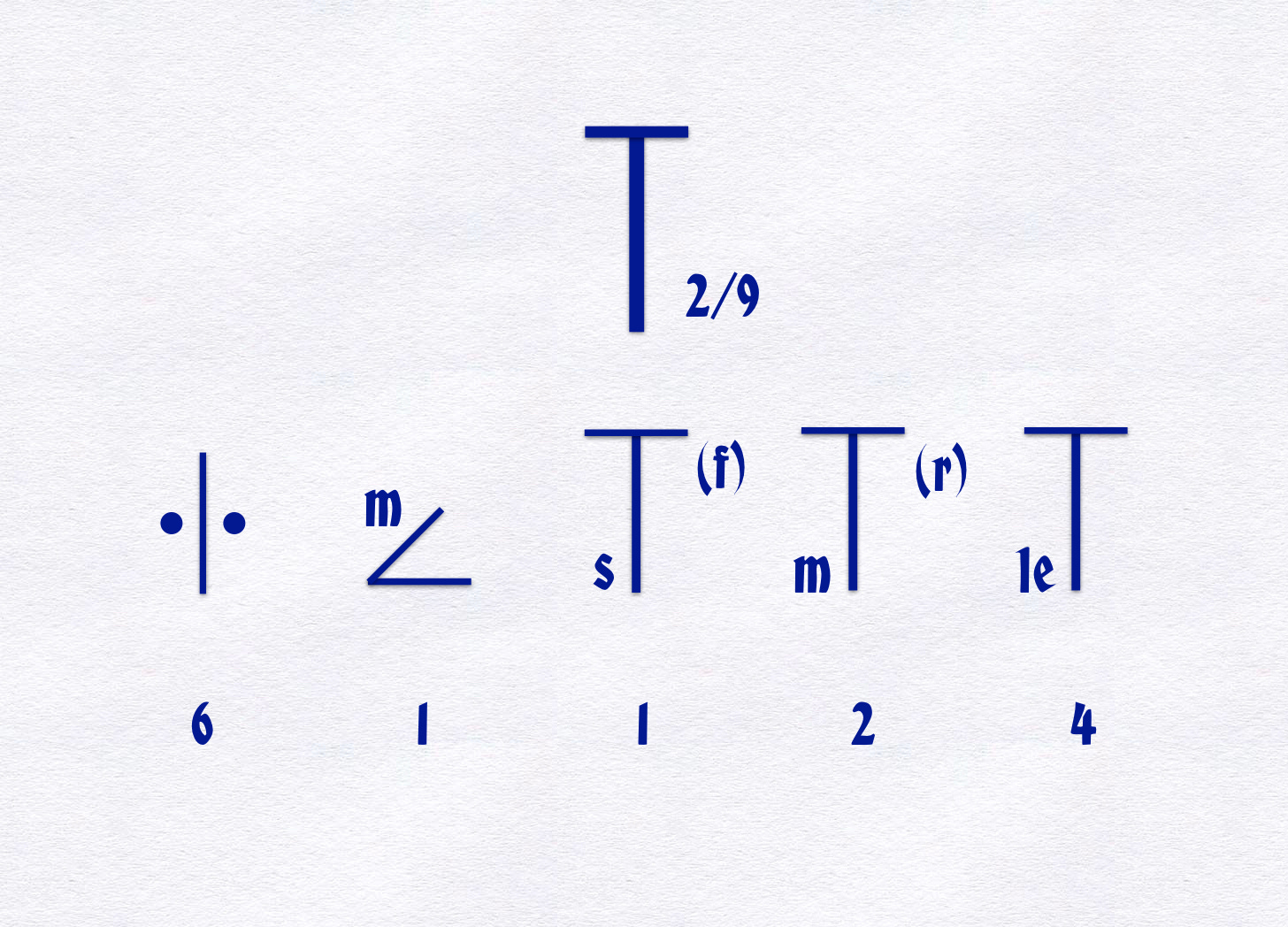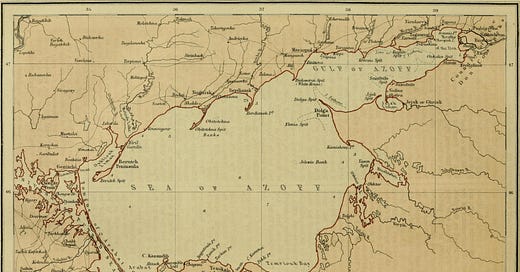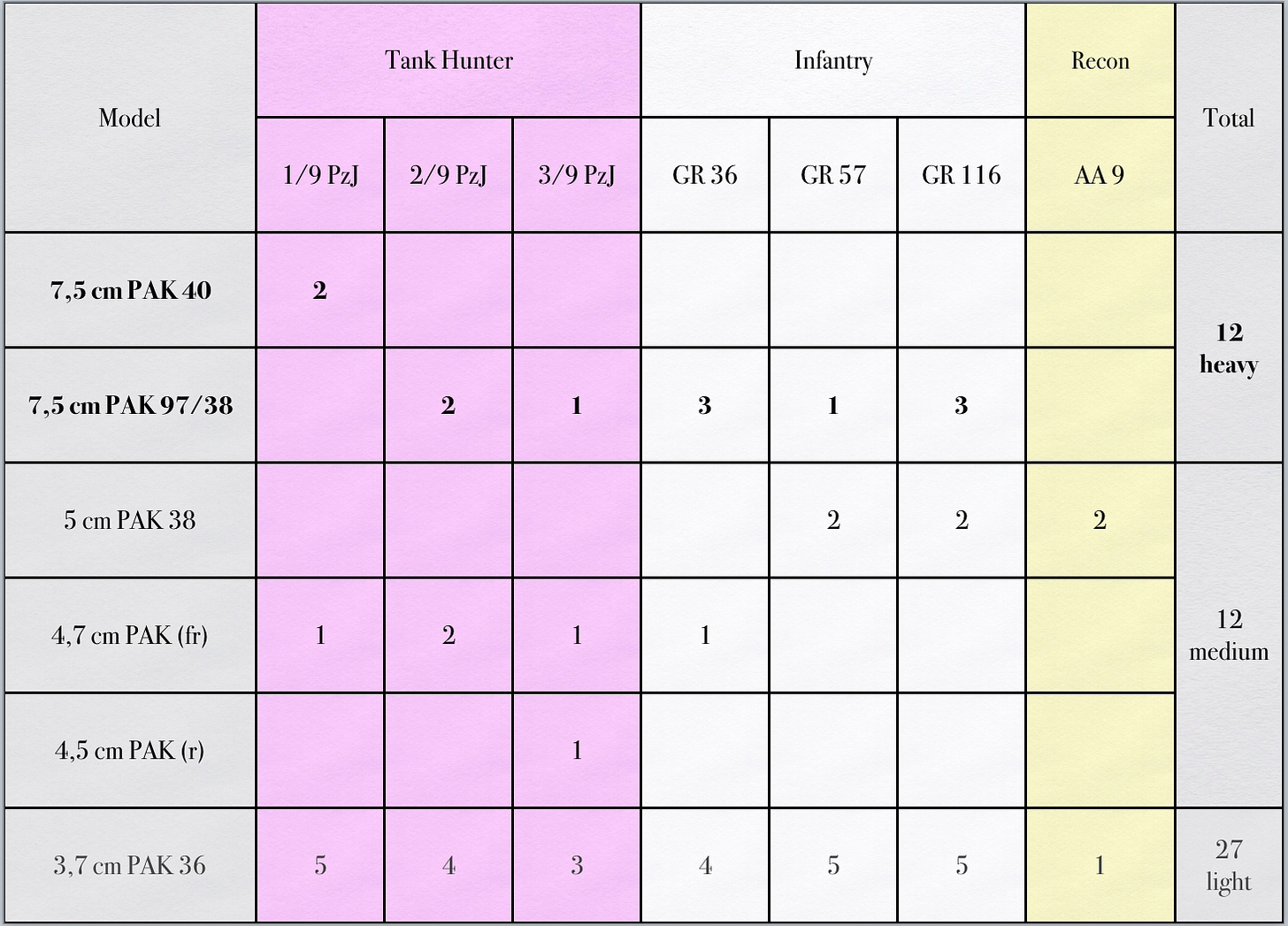The 9th Infantry Division spent the first year of the war between Germany and the Soviet Union in places familiar to observers of the ongoing war in Ukraine: Kyiv, Donetsk, Izium, and Bakhmut. In the summer of 1942, it moved to the east side of the Sea of Azov, where, after spending a few weeks in Rostov-on-the-Don, it took up positions in Kuban Bridgehead, where it would stay until October of 1943. (Rostov is located in the northeast corner of the map, the Kuban Bridgehead can be found near the southern edge of the map, just west of the title that reads “The Sea of Azoff.”)
During this period, the 9th Infantry Division both lost and acquired a number anti-tank guns. Thus, while it began the Second World War with seventy-five anti-tank guns of a single type, an inventory conducted on 1 May 1941 indicated that the number of such weapons in use had dropped to twenty-seven. At the same time, the the seven units of the division that rated anti-tank guns had managed to acquire twenty-four new anti-tank weapons of five different kinds. Of these, eight were standard weapons of German manufacture, five were 47mm pieces originally built for the French Army, one had been captured from a Soviet unit, and ten had been made by mounting the barrel of a French 75mm gun (Model 1897) upon a German carriage.
When the armament of the anti-tank units of the 9th Infantry Division had been uniform, the 37mm guns had been assembled into standard three-gun platoons. Thus, whether assigned to one of the companies of the anti-tank battalion, the anti-tank company of an infantry regiment, or the heavy company of the reconnaissance battalion, the anti-tank guns were organized in the same way.
By the spring of 1943, the variety of anti-tank weapons lead to the adoption of what might be called the “Chinese restaurant” approach to the armament of anti-tank platoons. That is, each platoon received one heavy anti-tank weapon (whether a 75mm PAK 40 or a 75mm PAK 97/38), one medium piece (45mm Soviet, 47mm French, or 50mm German), and two light guns (37mm German),
If the experience of anti-tank ace Sergeant Kurt Volk is any indication, the two lighter pieces of each platoon served chiefly as the handmaidens of the heavy gun. In particular, they distracted Soviet tanks while the heavy gun found its range. Better yet, while doing this, the lighter pieces caused the tanks to expose the sides of their turrets to the fire of the heavy gun, thereby increasing the chances that a hit would result in catastrophic damage.
Some of the inventories of anti-tank weapons found in the records of the 9th Infantry Division make no mention of 37mm pieces. That is, when counting anti-tank guns, they list only the heavy and medium models. This may suggest the presumption that, to extend the metaphor of the Chinese restaurant, the lightest pieces played the role of egg rolls. That is, all concerned knew that one or two were included with every meal and so didn’t feel the need to order them explicitly. The absence of 37mm anti-tank guns from lists may also indicate that, at a time when gunners, vehicles, and fuel were all in short supply, many leaders decided to keep them in storage.

Indeed, the appearance of symbols for medium mortars on the organizational diagrams of the 9th Tank Hunter Battalion suggests the possibility that some leaders decided that 81mm mortar shells provided a better complement to 75mm anti-tank guns than 37mm projectiles. (For one thing, explosive-filled mortar shells did a better job of convincing Soviet tankers to “button up.” For another, well-placed smoke shells might convince a Soviet tank commander to move his machine to a place covered by a heavy anti-tank gun.)

Source: Records of the 9th Infantry Division, US National Archives, Microfilm Series T 315, Roll 525, Frames 135, 136, 374, 448, 449, and 492.
For Further Reading:
To Support, Subscribe, or Share:












The possibility of shaping fires from 81mm mortars in combination with AT guns is a very interesting, thank you!
“‘Chinese restaurant’ approach to the armament of anti-tank platoons.” 😂
I think I shall remember that phrase when discussing flexibility in weapons and equipment and adapting to the conditions at hand. Also, I am sure that the 81mm mortar helped out with obscuring enemy observation of the main anti tank position and discouraging accompanying infantry units from advancing with the tanks (along with the light machine guns).